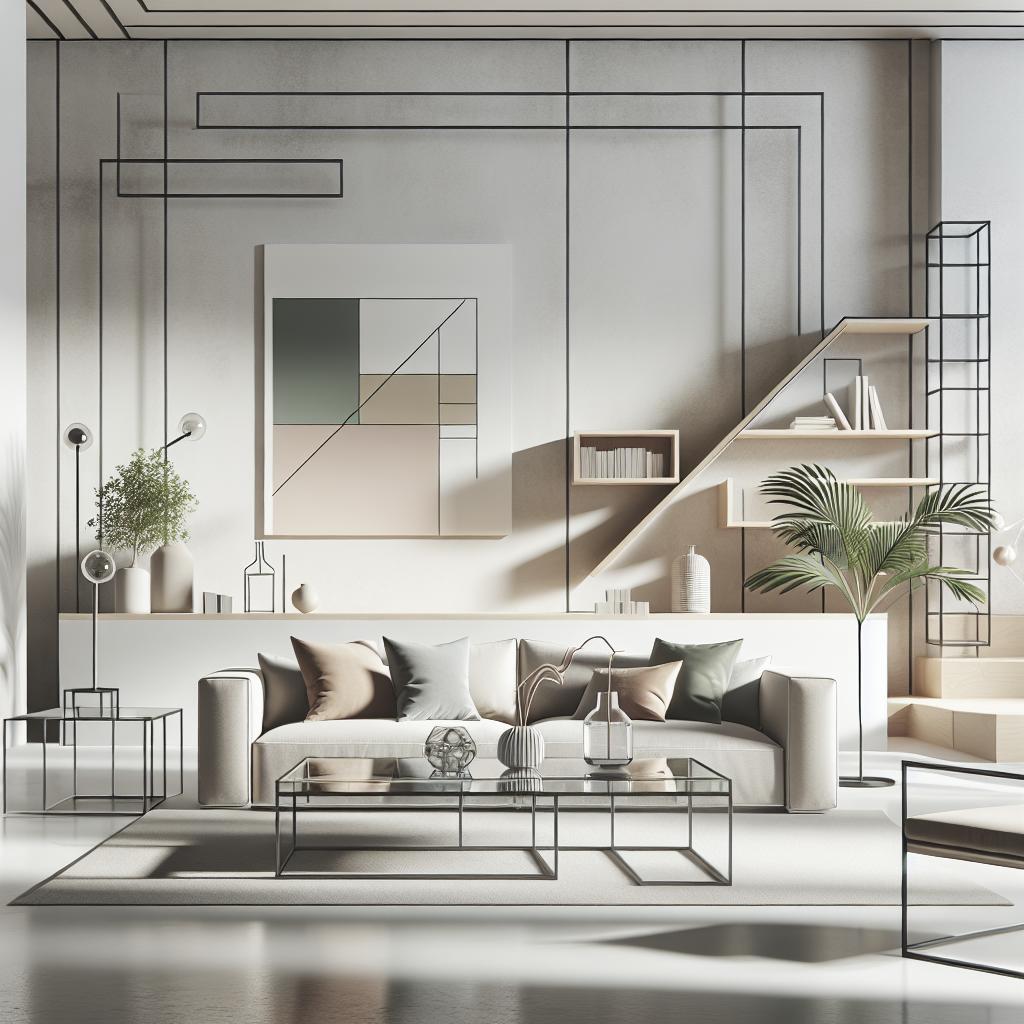## Introduction Designing a product, building, or space comes with a myriad of decisions, one of the most critical being the selection of materials. The right materials can enhance performance, aesthetics, cost-effectiveness, and sustainability. This blog provides a comprehensive guide on how to choose the right materials for design projects. We will explore the importance of understanding and prioritizing project requirements, balancing performance and appearance needs, and weighing cost implications. We’ll also delve into the advantages of using appropriate materials, different spatial uses, and the vital role of reliable suppliers in this process. By considering these factors, designers, architects, and engineers can optimize their projects for both function and form, while ensuring a successful collaboration with suppliers. Whether you’re a seasoned professional or a newcomer to the field, understanding these concepts will help ensure that your designs not only meet but exceed expectations. ## Requirements Understanding the requirements of a project is fundamental to choosing the right materials. Requirements not only encapsulate the expectations of the final product but also include constraints imposed by the environment, budget, and technology. By defining clear requirements, a designer can narrow down the wide range of materials to those that feasibly achieve the desired outcomes. The requirements are often categorized into functional, aesthetic, economic, and environmental considerations. Functional requirements relate to the purpose of the design — what it needs to do and how it will be used. Aesthetic requirements are about how a design looks and fits into its surrounding environment. Economic considerations include cost constraints, while environmental considerations cover the sustainability and life-cycle impact of materials. Comprehensively understanding these requirements is the cornerstone of the design process. It helps ensure that all aspects of the design are in harmony, minimizing the risk for costly redesigns or adjustments down the line. ## The Need to Consider Requirements Carefully It’s crucial to consider requirements with diligence because they directly influence the decision-making process regarding materials. Overlooking or inadequately defining requirements can lead to significant issues such as structural failure, aesthetic disappointment, or unsustainable designs. Such outcomes not only compromise the integrity of the project but can also lead to financial and reputational damage. Assessing requirements thoroughly involves engaging with stakeholders, conducting feasibility studies, and understanding the end-user’s needs. A well-conceived requirements list serves as a blueprint for the entire project, directing each decision toward achieving the set goals. In some instances, requirements might conflict with one another; thus, prioritizing them is essential. Understanding which aspects cannot be compromised helps in making informed decisions about what trade-offs might be acceptable in the materials selection process. ## Performance Requirements Performance is a key pillar in material selection. It addresses how well a material meets the functional needs of a project. This includes durability, strength, weight, thermal performance, and resistance to environmental conditions. For instance, a material chosen for an outdoor sculpture must be weather-resistant, while one for a mobile device must be lightweight yet robust. Determining performance requirements necessitates a thorough understanding of the environmental conditions the material will face and frequent interactions with other materials or systems. Designers and engineers should conduct tests or simulations to accurately determine how materials will behave under specific conditions. Furthermore, the long-term performance of materials should also be taken into account. This involves evaluating aspects such as wear and tear, fatigue, and maintenance requirements. Selecting materials based on performance ensures the longevity and functional excellence of the final product. ## Appearance Conditions Appearance is often the first impression a design makes, and thus its significance cannot be overstated. Materials greatly influence the aesthetic outcome of a project, affecting texture, color, and shine. When selecting materials, it is paramount to match these visual characteristics with the design’s intended style and context. Materials must harmonize with the surrounding environment and the design’s overall theme. For example, a modern building design might employ materials like glass and steel to emphasize sleekness and transparency, while a traditional design may use stone or wood for warmth and character. Additionally, the interaction of light with materials should be a consideration. Reflectivity and translucency affect how surfaces appear under various lighting conditions. Materials must meet these appearance conditions to ensure the design not only looks good in a controlled setting but also maintains its aesthetic appeal in actual use. ## Material and Manufacturing Costs Cost plays a pivotal role in material selection, influencing both immediate project feasibility and long-term financial implications. Designers must balance the budgetary constraints without compromising performance or appearance. Therefore, a detailed cost analysis during the planning phase is essential. The initial material cost is just one facet to consider. Other financial considerations include manufacturing costs, which can vary depending on the complexity of working with a given material and the required processes. For instance, some materials may be affordable but difficult to fabricate, driving up manufacturing costs. Additionally, lifecycle costs, such as maintenance, replacements, and disposal, should factor into the decision-making process. A thorough understanding of the total cost of ownership can aid in choosing materials that not only fit the immediate budget but also offer cost efficiency throughout the project’s lifetime. ## Key Considerations with Materials Several key considerations guide the selection of materials, including their availability, sustainability, compatibility, and regulatory compliance. Availability ensures that materials can be sourced easily and timely, critical for maintaining project timelines. Sustainability is increasingly important, with a shift towards materials that minimize environmental impact. This involves considering the resources required for material production, its recyclability, and end-of-life disposal options. Sustainable materials set designs apart in the modern marketplace and align with global environmental goals. Compatibility refers to how materials work together or with other systems within the design. Incompatible materials can lead to structural issues or increased wear and tear. Lastly, regulatory compliance is a non-negotiable aspect, ensuring materials adhere to legal standards and safety protocols. ## The Benefits of Choosing the Right Materials Selecting the right materials delivers numerous advantages, including enhanced performance, customer satisfaction, and reduced costs. Proper material choice boosts the functionality and durability of a design, meaning it performs well over time and under various conditions. Customer satisfaction is closely linked to material choice. A well-maintained appearance and performance build trust and drive user engagement. Additionally, choosing durable materials reduces the need for frequent maintenance or replacements, optimizing costs over the project’s lifecycle. Furthermore, the right materials can enable creative solutions and competitive advantage by offering unique properties that enhance the design. Ensuring that the material aligns with project requirements adds value and achieves design objectives more effectively. ## Different Uses of Space The use of space is a significant factor when selecting materials, particularly in architecture and interior design. Materials must be chosen based on the functional and aesthetic needs specific to a space type, considering elements like acoustics, privacy, and utility. For instance, public areas may prioritize durable, easy-to-clean materials to accommodate high foot traffic, while residential spaces might focus on comfort and aesthetics. Similarly, an office environment might use materials that convey professionalism and support acoustics for meetings and interactions. The diversity in space usage necessitates a nuanced understanding of how different materials serve varied purposes. Thoughtful material use can significantly enhance the user experience, creating environments that are not only functional but also inviting and coherent with their intended use. ## Working with the Right Suppliers Choosing the right supplier is intrinsic to successful material acquisition. Suppliers play a critical role in guaranteeing material quality and meeting project deadlines. Engaging with reputable suppliers ensures reliability and a steadier supply chain. The right supplier will offer quality assurance, competitive pricing, and be flexible enough to adjust as a project evolves. Establishing a good relationship with suppliers can foster better communication, align expectations, and ensure materials meet all specified requirements. Ensuring that suppliers align with design goals reduces risks associated with delays or substandard materials. It also facilitates better planning and allows room for innovation if suppliers offer expertise or suggestions for alternative materials. ## The Importance of Choosing the Right Supplier The choice of supplier directly affects project execution and meeting material specifications. A strategic supplier partnership can enhance project success rates, lower procurement risks, and ensure high-quality outputs. ### 1. Are They Reliable? Reliability is essential when selecting a supplier. It encompasses consistent delivery timelines, dependable quality, and accountability for their products. A reliable supplier helps avoid costly delays in project schedules and ensures design continuity. ### 2. What Is It Like to Work with Them? Collaborating with suppliers should be a seamless process. Suppliers should offer excellent customer service, clear communication, and problem-solving capabilities. This relationship is pivotal, as it ensures that any changes in material or delivery schedules are managed efficiently. ### 3. Do They Deliver on Expectations? Suppliers must deliver materials that consistently meet or exceed the agreed-upon specifications. Adherence to expectations includes quality, quantity, and timeline commitments. Evaluating past performance and seeking recommendations can provide insights into the supplier’s reliability in this regard. ## Future Prospects
| Aspect | Key Point |
|---|---|
| Requirements | Understanding the function, aesthetics, economy, and environmental needs. |
| Performance Requirements | Evaluating durability, strength, and environmental resilience. |
| Appearance Conditions | Ensuring materials match the design’s visual goals. |
| Material and Manufacturing Costs | Balancing initial costs with manufacturing and lifecycle costs. |
| Key Considerations with Materials | Assessing availability, sustainability, compatibility, and regulatory compliance. |
| Benefits of Choosing the Right Materials | Improving performance and reducing lifecycle costs. |
| Different Uses of Space | Selecting materials based on specific spatial functional and aesthetic needs. |
| Working with the Right Suppliers | Ensuring quality and timely delivery through reliable suppliers. |
| The Importance of Choosing the Right Supplier | Evaluating reliability, collaboration ease, and expectation delivery. |
As the field of design evolves, choosing the right materials remains a cornerstone of successful project completion. By understanding and prioritizing the requirements, performance, appearance, and cost, among others, designers can continue to innovate and create spaces and products that inspire and function effectively. Leveraging the right suppliers will further drive success, ensuring that creative visions are brought to life with precision and reliability.


